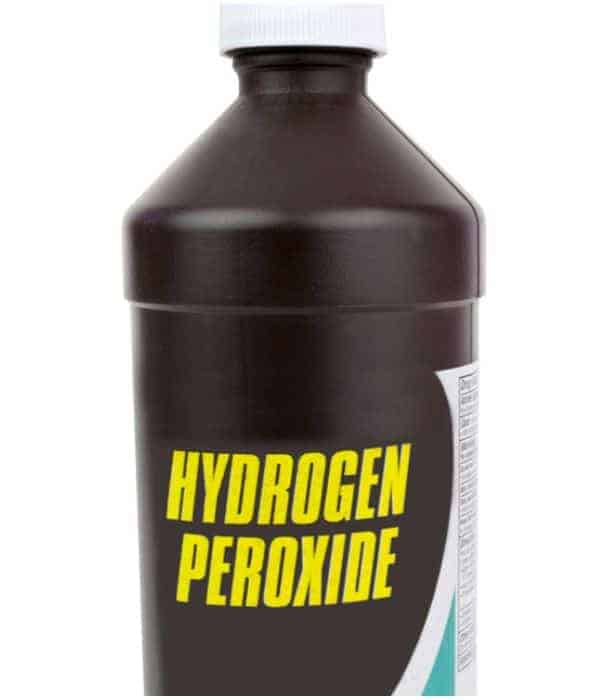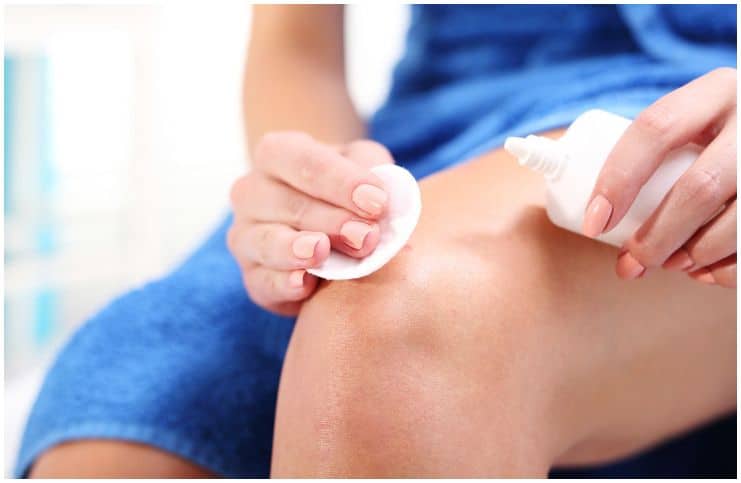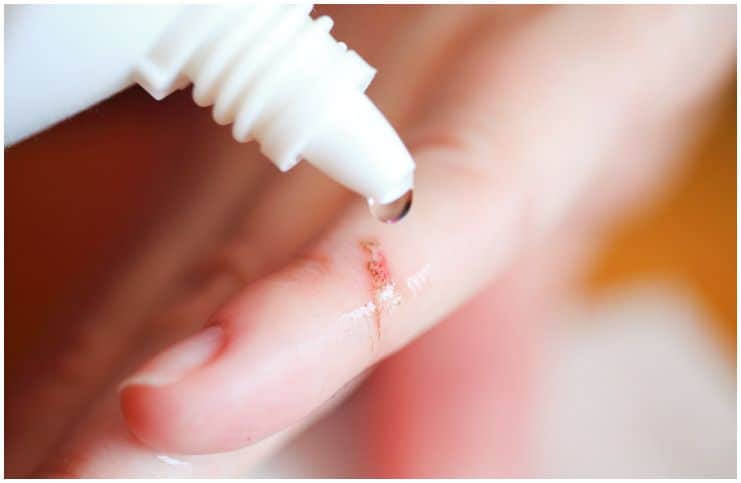Hydrogen Peroxide
It is a colorless liquid (with chemical formula H2O2), only a little more viscous than water. It was first discovered in 1818 by Louis Jacques Thénard, who manufactured it by treating barium peroxide (an inorganic compound with the formula BaO2) with nitric acid.
It decomposes into water and oxygen upon heating or in the presence of various chemical compounds, especially the salts of copper, iron, nickel, manganese, or chromium.
It is a solution that should never be used on wounds and cuts because it disrupts healthy tissue and slows healing. Besides, the white blood cells naturally produce hydrogen peroxide to fight pathogenic bacteria and infections. In addition, legumes, veggies, and fruits naturally produce it.
Uses
According to a 2017 study issued in the “Otolaryngology-Head and Neck Surgery,” this solution has been considered an effective ingredient in earwax removal solutions for many years.
To clear up an ear infection quickly, you may use just a few drops of very dilute solution in the ear, as the liquid makes its way through the gunk to kill the harmful bacteria.
It is also widely applied for dishwasher cleaning and laundry cleaning.
Toothpaste
It regularly features in the majority of toothpaste. Research has concluded that prolonged use of this solution with a strength of 3% lowers plaque and gingivitis indices.
Moreover, it has potent oxidizing properties; hence, it is used as an effective bleaching agent especially for whitening and bleaching things. The usual 3 percent solution sold in most drug stores as a disinfectant is the best choice for the laundry as well.
When your house becomes invaded by toxic mold, you can also use this solution. Lastly, it is a cheap alternative to the lens cleaning solution, and it is the active compound in most lens cleaning solutions anyway.
Side Effects
Consumption of this substance can be severely detrimental to human health, causing nausea, dizziness, vomiting, and even death – if ingested in large enough quantities.
Also, if ingested internally (concentrations more than 10 percent), it can potentially cause neurological reactions.
More importantly, solutions containing more than 8% hydrogen peroxide are particularly corrosive to the skin.
Inhalation of vapors from concentrated (more than 10 percent) solutions may result in pulmonary edema (fluid accumulation in air spaces of the lungs and the tissue) and bronchitis (inflammation of the bronchi in the lungs).
Rubbing Alcohol
Rubbing alcohol, also referred to as isopropyl alcohol, is usually 30% distilled water and 70% isopropyl alcohol. It works as a powerful disinfectant and is basically a solvent, meaning it dissolves oil and dirt.
This substance is very closely related to ethanol (drinking alcohol), the common substance that is found in wine, beer, and hard liquor. Moreover, it is a volatile liquid, hence, when its container is left open, it evaporates rapidly.
While it is correct that it can work to lower germ activity within the wound surface, it will also burn your skin.
Therefore, it is recommended to not clean wounds with this compound because skin cells can be damaged and itching or swelling might result.
Uses
It makes an effective and cheap de-greaser. All you need to do is pour a bit of this solution onto a clean rag and wipe down your stove. Besides, mixed with water, it can be a great spot remover which works on many types of stains, such as coffee or ink.
Because cold windows can crack from the extreme temperature change, it is much safer than using hot water for dissolving already-existing frost.
Moreover, if you have a smelly pair of shoes, this solution can help. You can spray it in your smelly sneakers, then allow them to dry. It is acknowledged that it can make even the oldest shoes smell like new.
In the pharmaceutical industry, it may be used in small, safe quantities in tablet or capsule manufacturing.
Side Effects
Inhaling this compound can lead to headaches, according to Purdue University.
It is not safe for internal use and anyone who accidentally consumed it should seek immediate medical attention since it can cause death or permanent injury (including – blindness, coma, vomiting, seizures, slow breathing, confusion, bluish or pale skin).
Rubbing alcohol poisoning starts to set in within half an hour after ingestion.
Bottom Line – Which Is Better For Cleaning Wounds: Hydrogen Peroxide vs Rubbing Alcohol?
Neither. You don’t need to use damaging stuff like these two chemical solutions to disinfect a recent wound. Also, an open wound, although not sterile, will rarely get infected provided that you remove foreign bodies.
The most effective way for treating minor wounds, and get rid of bacteria, dirt, and debris without damaging healthy tissue is water and mild soap (without triclocarban, triclosan, or fragrances – these are usually found in antibacterial soaps).
However, it is not recommended to use tap water in considerably deep wounds, like when tendon or bone is exposed.
Sterile saline solution (with 0.9 percent sodium chloride) can also be used to safely clean any injury, no matter how deep. It can be stored at room temperature in a plastic bottle or a tightly covered glass. You can make it or buy it.
READ MORE: Do Probiotics Cause Smelly Gas And Bloating?
References https://www.ncbi.nlm.nih.gov/pmc/articles/PMC4471055/ https://study.com/isopropyl-alcohol-uses-structure-formula.html https://www.ncbi.nlm.nih.gov/books/NBK208299/


